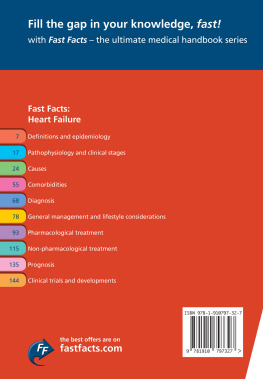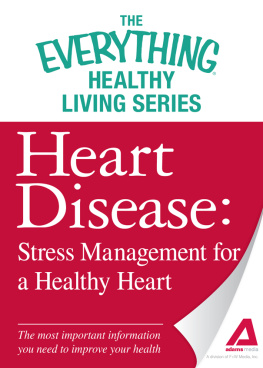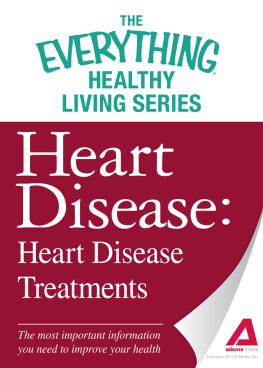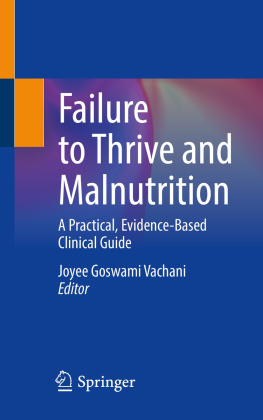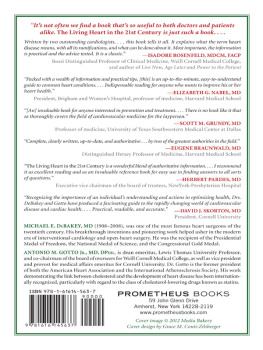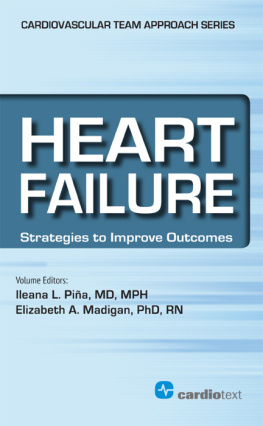
Fast Facts: Heart Failure
Second edition

| Dariusz Korczyk MD IntMedSpec(P)
FRACP FCSANZ MHFA Cardiologist, Heart Failure Unit
Princess Alexandra Hospital
Brisbane, Australia |

| Gerry Kaye MBChB MD FRCP FRACP FHRS Consultant Cardiologist/Electrophysiologist
and Associate Professor of Cardiology
Department of Cardiology
Princess Alexandra Hospital
Brisbane, Australia |
Declaration of Independence
This book is as balanced and as practical as we can make it.
Ideas for improvement are always welcome:

Fast Facts: Heart Failure
First edition 2012; reprinted 2013, 2016
Second edition June 2017
Text 2017 Dariusz Korczyk, Gerry Kaye
2017 in this edition Health Press Limited
Health Press Limited, Elizabeth House, Queen Street, Abingdon,
Oxford OX14 3LN, UK
Tel: +44 (0)1235 523233
Book orders can be placed by telephone or via the website. To order via the website, please go to: fastfacts.com
For telephone orders, please call +44 (0)1752 202301.
Fast Facts is a trademark of Health Press Limited.
All rights reserved. No part of this publication may be reproduced, stored in a retrieval system, or transmitted in any form or by any means, electronic, mechanical, photocopying, recording or otherwise, without the express permission of the publisher.
The rights of Dariusz Korczyk and Gerry Kaye to be identified as the authors of this work have been asserted in accordance with the Copyright, Designs & Patents Act 1988 Sections 77 and 78.
The publisher and the authors have made every effort to ensure the accuracy of this book, but cannot accept responsibility for any errors or omissions.
For all drugs, please consult the product labeling approved in your country for prescribing information.
Registered names, trademarks, etc. used in this book, even when not marked as such, are not to be considered unprotected by law.
A CIP record for this title is available from the British Library.
ISBN 978-1-910797-32-7
Korczyk D (Dariusz)
Fast Facts: Heart Failure/
Dariusz Korczyk, Gerry Kaye
Medical illustrations by Dee McLean, London,
and Annamaria Dutto, Beverley, UK.
Typesetting by Thomas Bohm, User Design, Illustration and Typesetting, UK.
Printed in the UK with Xpedient Print.
Afterload: the amount of hemodynamic pressure peripheral vascular resistance downstream from the heart
Amyloidosis: systemic illness with uncontrolled production and organ deposition of abnormal protein
BNP: type B natriuretic peptide
Cachexia: loss of weight with muscle atrophy, fatigue, weakness and significant loss of appetite as a result of chronic illness
CAD: coronary artery disease
Compensated heart failure: heart failure with sufficient cardiac output maintained by physiological compensatory mechanisms
Contractile reserve: measure of the myocardiums ability to increase its contractility with stress (exercise or dobutamine)
Cor pulmonale: failure of the right side of the heart due to long-term high blood pressure in the pulmonary arteries and right ventricle
CRT: cardiac resynchronization therapy (CRT-P, with pacemaker; CRT-D, with pacemaker and defibrillator)
Decompensated heart failure: heart failure with clinical signs of fluid overload or low-output state despite compensatory mechanisms
EF: ejection fraction the percentage of blood pumped from the ventricles with each heart beat
HCM: hypertrophic cardiomyopathy
HFmrEF: heart failure with mid-range ejection fraction (4049%)
HFpEF: heart failure with preserved (or normal) ejection fraction ( 50%)
HFrEF: heart failure with reduced ejection fraction (< 40%)
Hypovolemia: intravascular volume loss (due to, for example, bleeding, dehydration, fluid loss)
ICD: implantable cardiac defibrillator
Inotropic: increasing the strength of myocardial contraction
Ischemic heart disease: cardiac disease resulting from CAD
LV: left ventricle/ventricular
LVEF: left ventricular ejection fraction
LVH: left ventricular hypertrophy
MET: metabolic equivalent of task; defined as the ratio of metabolic rate during a specific physical activity to a reference metabolic rate. (MET values range from 0.9 [sleeping] to 18 [running at 17.5 km/hour])
MI: myocardial infarction
NYHA: New York Heart Association
Preload: passive filling of the heart
OSA: obstructive sleep apnea
RAAS: reninangiotensinaldosterone system
RV: right ventricle/ventricular
Vasoconstriction: active narrowing of the blood vessels (arteries) in response to a trigger
Now that we have a better understanding of the mechanisms and outcomes of heart failure (HF), effective new treatments from drugs to surgery to devices are revolutionizing both outcome and wellbeing in patients with the condition. Nevertheless, it remains a serious public health problem, as the number of patients requiring treatment continues to increase along with the associated costs to healthcare systems and society.
This book is an ideal introduction to HF for primary care providers, cardiac nurses, junior hospital doctors, medical students and cardiology trainees looking for a clear approach to patient management in a highly readable form. We start with new definitions of HF (different types of HF require different treatments), then provide the latest thinking on mechanisms and clinical stages, underlying causes and the assessment and management of comorbidities. This is followed by simple diagnostic criteria and a comprehensive overview of investigations.
The management chapters focus on the importance of self-care education and healthy lifestyle choices, together with the latest recommendations for pharmacological treatment, device therapy and cardiac surgery. As well as the first-line angiotensin-converting enzyme (ACE) inhibitors, angiotensin receptor blockers (ARBs), beta-blockers and diuretics that have been central to HF therapy for more than 20 years, the advent of a first-in-class angiotensin-receptor/neprilysin inhibitor is an indication of the ongoing innovation in this rapidly moving field, as the final chapter on developments also shows.
We have distilled a lot of complex information, and used diagrams, algorithms and pull-out tables to make it as practical and digestible as possible, with key points and references for further reading at the end of each chapter. Furthermore, you can quickly test your knowledge after reading this book by taking our FastTest at fastfacts.com.
Next page
